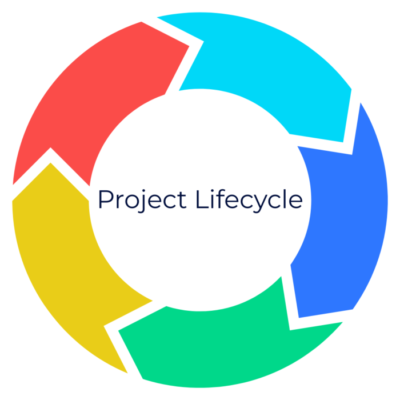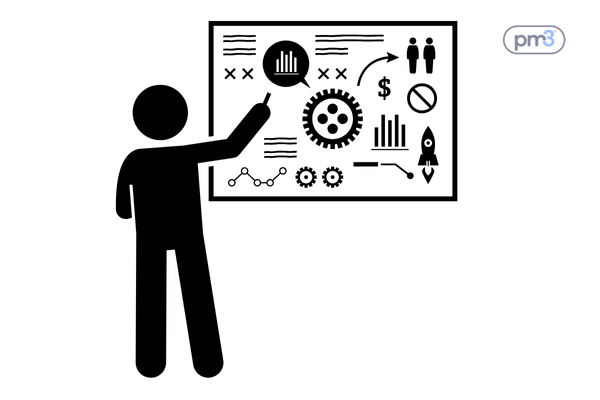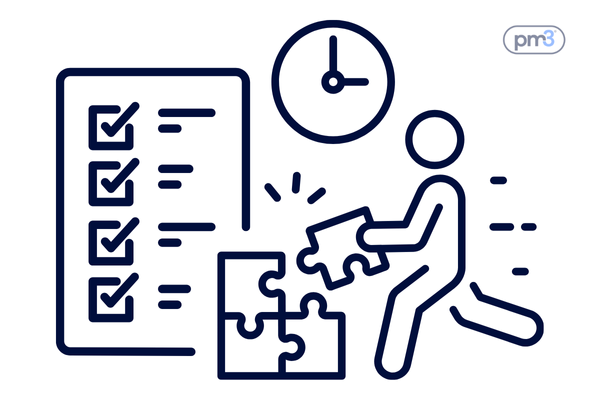From project start to finish, every successful project follows a structured journey. Yet for many organisations, especially those juggling complex portfolios, the phases of the project lifecycle can blur – causing delays, budget overruns, and misalignment with strategic goals. Understanding and mastering the project lifecycle isn’t just a PMO best practice, it’s the foundation of project success.
In this guide, we’ll break down each phase of the project lifecycle, explore common pitfalls, and offer practical tips to help your team move from firefighting to forward planning. Whether you’re running transformation programmes or BAU initiatives, a consistent lifecycle can be your biggest asset.

The project lifecycle is the series of phases a project passes through from beginning to end. It’s your framework for structure, governance, and decision-making. And when it’s aligned with your internal processes and tools, it helps:
Most organisations adapt the lifecycle to suit their needs, but the core stages remain fairly consistent.

This is where your project idea becomes more than just a conversation. It’s formalised through a business case, capturing:
Typically, this is where governance boards come in to assess whether the project is worth pursuing.
What often goes wrong?
Unclear ownership, patchy documentation, or business cases that don’t tie into wider strategy.
Make it easier:
Use pre-defined templates and benefit criteria to evaluate all projects on a level playing field. This keeps things focused and reduces approval delays.

Now the real groundwork begins. Planning should cover:
Common blocker?
Planning in silos. Different teams, different tools and no way to spot overlaps or interdependencies.
What helps:
Integrated tools like PM3 let you map dependencies across programmes and portfolios. This keeps everything in sync, especially in complex or multi-agency environments.

This is where your plans become actions. Teams start delivering on their work packages, while project managers oversee:
What gets in the way?
Lack of real-time data, reporting delays, and scope creep.
How to stay on top:
Introduce regular checkpoints. PM3’s real-time dashboards help you monitor delivery without chasing updates.

It’s tempting to jump to the next big thing once the final milestone is ticked off, but formal closure matters. It should include:
Why it’s skipped:
Teams move on too quickly, or closure isn’t built into your governance structure.
Better approach:
Make closure a standard phase with clear responsibilities. PM3 supports structured post-project reviews so teams can improve with every delivery.

It’s not always listed as a formal phase, but tracking the impact of your project is essential.
When you compare expected vs. actual benefits, you’re not just justifying investment, you’re learning and improving.
Helpful tip:
Use a tool that links benefits directly to strategic objectives. PM3 makes this easy, so you can continue tracking success long after the project closes.
Implementing a structured project lifecycle offers numerous benefits, including:
Success Story: Hertfordshire Community NHS Trust adopted PM3 to streamline their project management processes. By leveraging PM3’s capabilities, they achieved better resource planning, improved reporting accuracy, and enhanced overall project delivery.
Click here to read the full story.
Whether you’re using a three-stage approach or a complex gated framework, PM3 adapts to fit your delivery model. You can:
It’s not just about visibility, it’s about control, consistency, and confidence.
The project lifecycle is more than a checklist. It’s a way to embed smarter ways of working, improve delivery outcomes, and create lasting value across your organisation.
And with a tool like PM3 at the heart of your approach, you’re not just reacting to problems, you’re getting ahead of them.
Let’s talk about how PM3 can fit your unique lifecycle and help your projects succeed.

Our products help you deliver successful change programmes and projects by always focusing on the overall business outcomes. Find out how our products can help you.
Discover PM3 Schedule a DemoAre you struggling to understand how to plan a project that keeps you and your team on target? In th...
Read more >This article provides you with five top tips on how you can help your team thrive in a remote workin...
Read more >